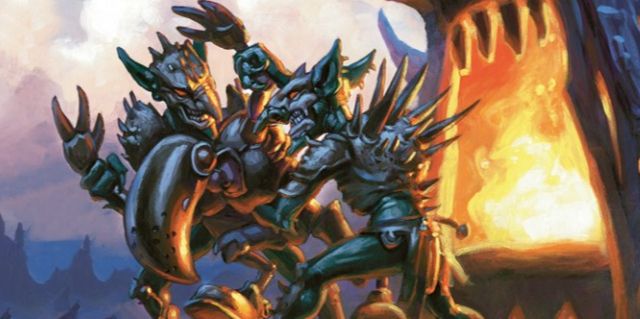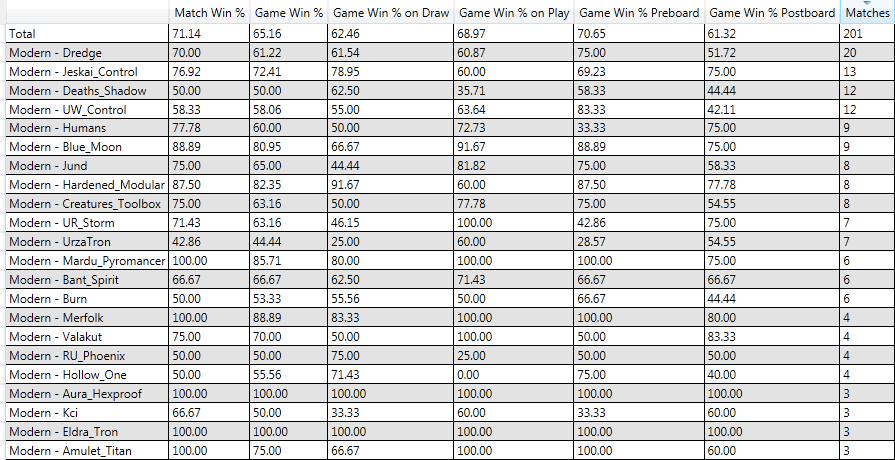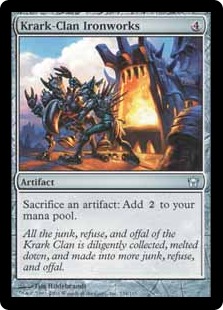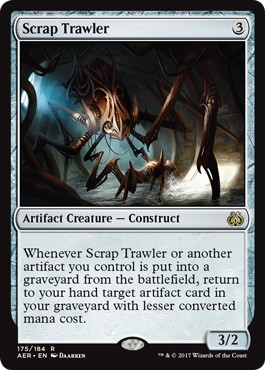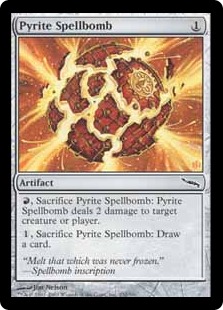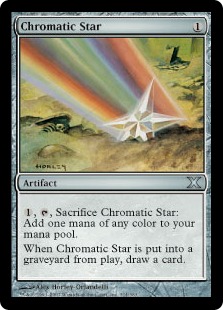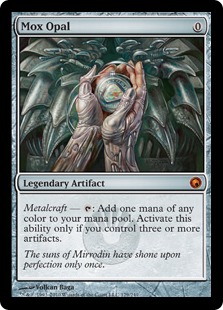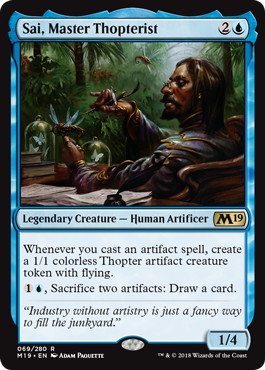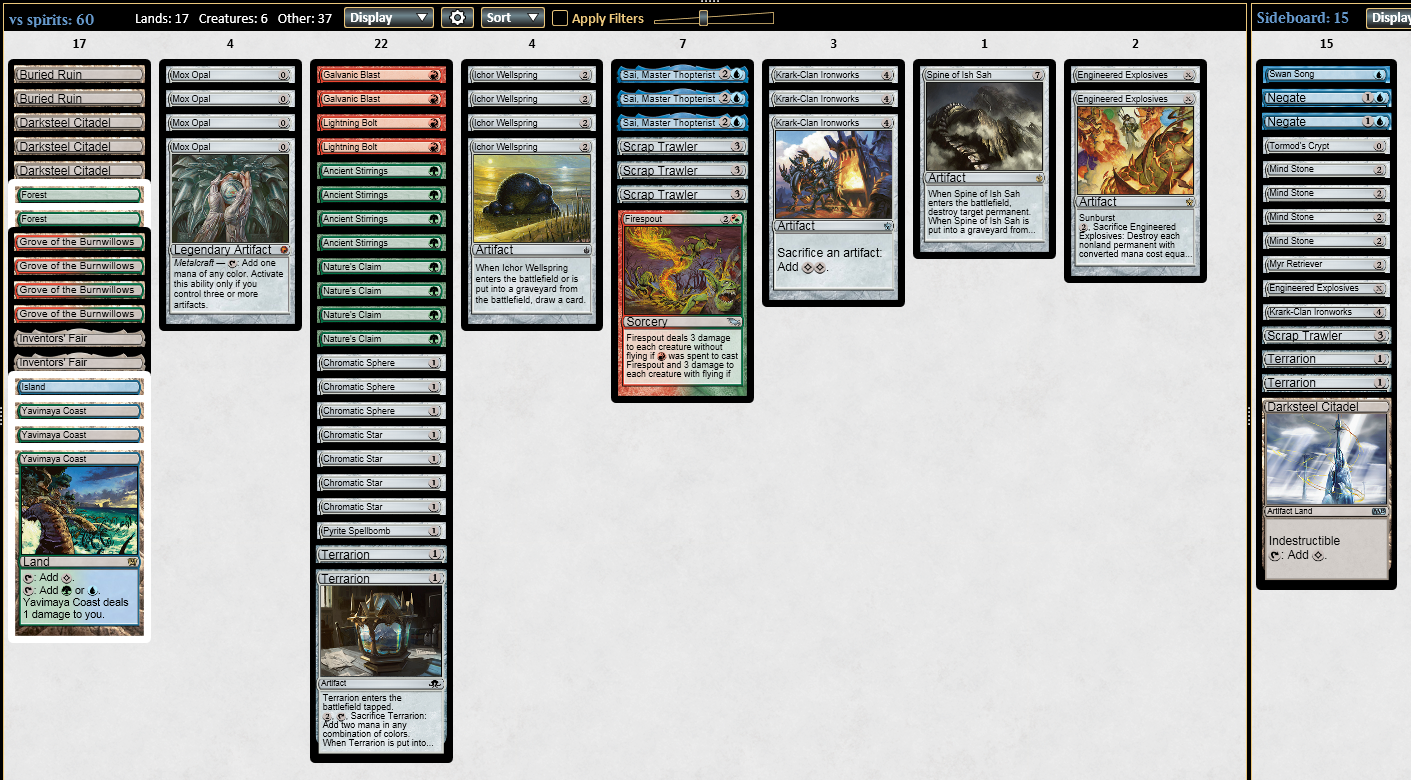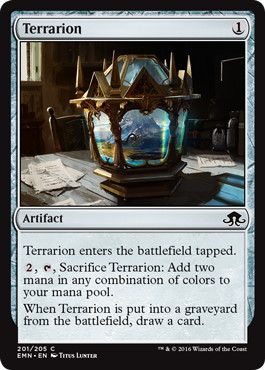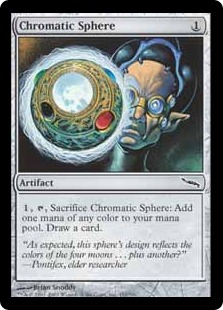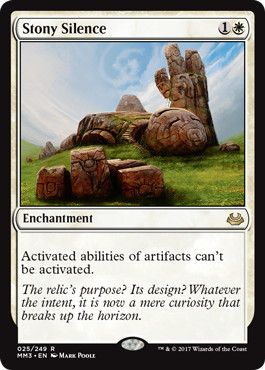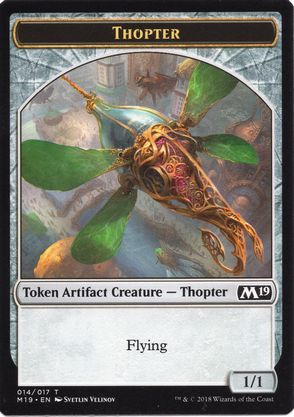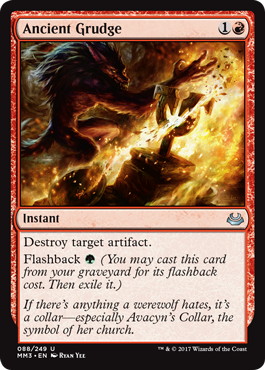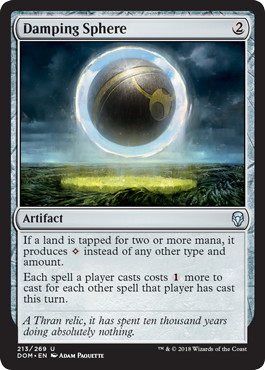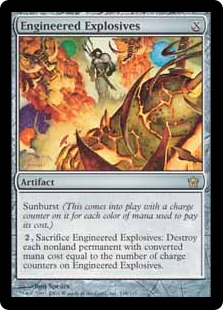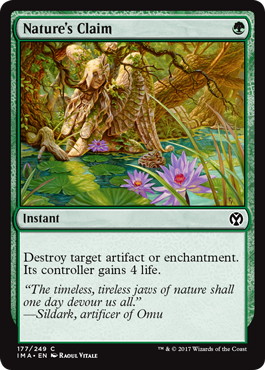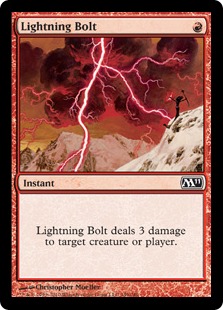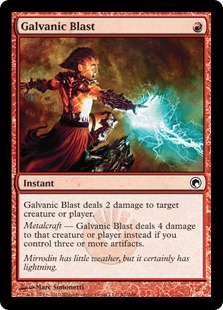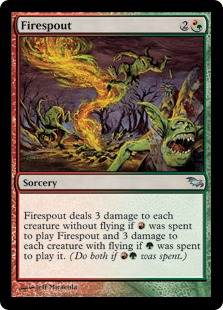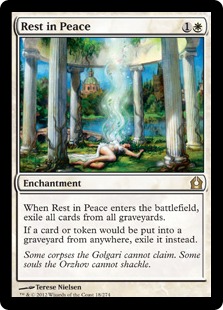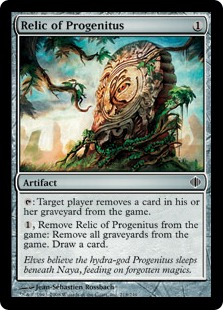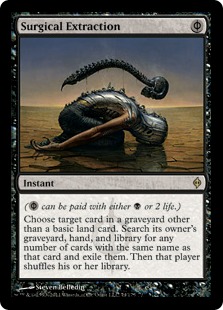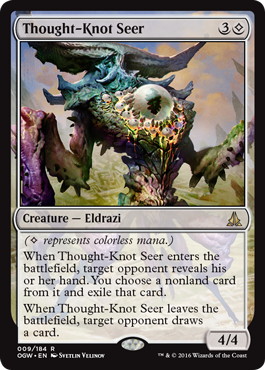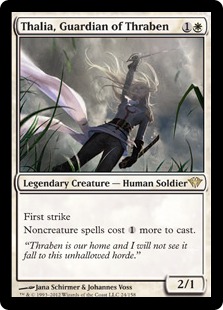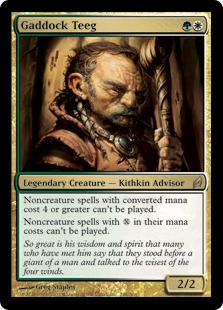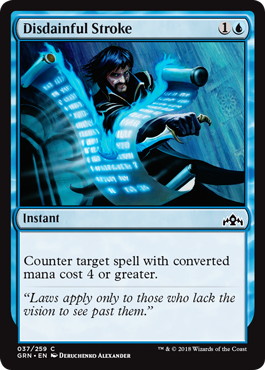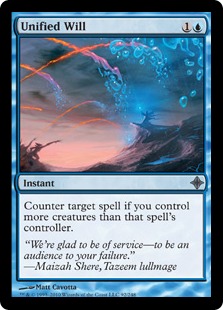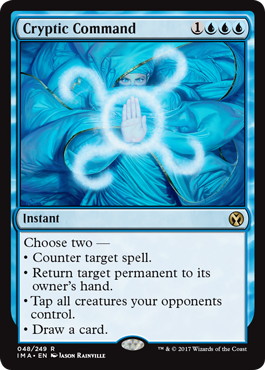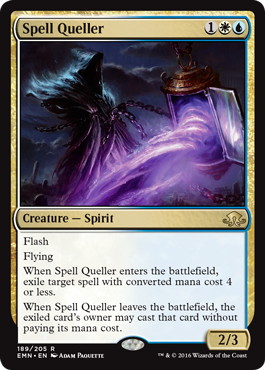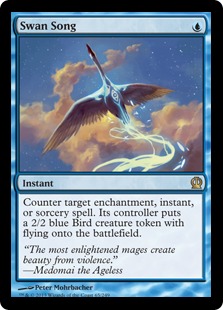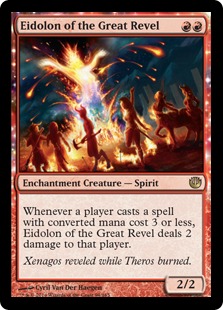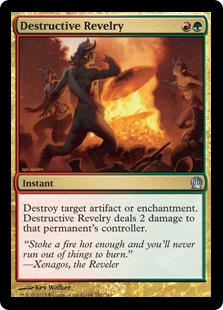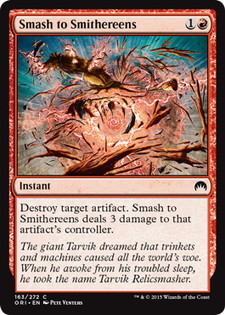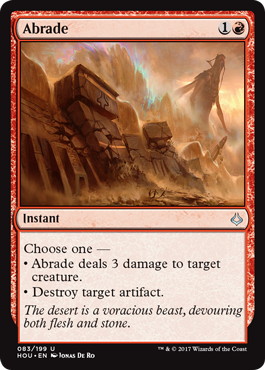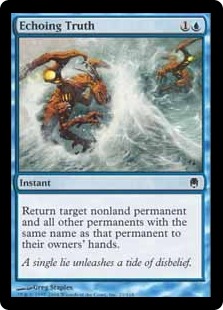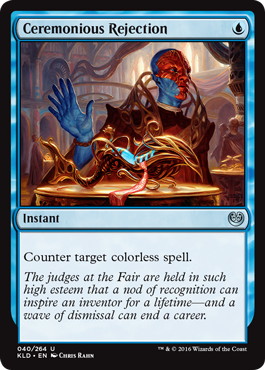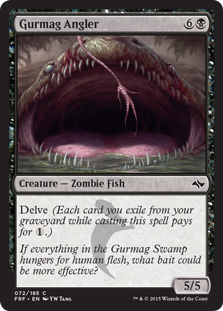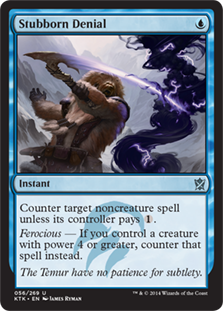Introduction and Decklist
A few weeks ago, I used a 《Krark-Clan Ironworks》 combo deck (KCI) to get second place at Grand Prix Atlanta 2018. Today, I want to provide you with a guide helping you to play this deck well. The decklist I’m posting here is not my exact one from the GP, but is one I’ll be most likely playing moving forward:
- Piotr Glogowski
- – KCI
- Test Deck
1 《Island》
4 《Grove of the Burnwillows》
3 《Yavimaya Coast》
4 《Darksteel Citadel》
2 《Buried Ruin》
2 《Inventors' Fair》
-Land (18)- 1 《Myr Retriever》
4 《Scrap Trawler》
1 《Sai, Master Thopterist》
-Creature (6)-
4 《Mox Opal》
3 《Engineered Explosives》
4 《Terrarion》
4 《Chromatic Star》
3 《Chromatic Sphere》
1 《Pyrite Spellbomb》
4 《Ichor Wellspring》
4 《Mind Stone》
4 《Krark-Clan Ironworks》
1 《Spine of Ish Sah》
-Spell (36)-
2 《Sai, Master Thopterist》
2 《Galvanic Blast》
2 《Lightning Bolt》
2 《Negate》
1 《Tormod's Crypt》
1 《Swan Song》
1 《Firespout》
-Sideboard (15)-
The exact timing of GP Atlanta was slightly weird, it being a Modern tournament held in the same place a week before Pro Tour Guilds of Ravnica was happening. Modern is not exactly the most popular format amongst Pro Tour players, so many just decided to show up at the tournament without much preparation, focusing their efforts on Standard. Given that I genuinely enjoy Modern, play it a ton, and I think I am pretty good at finding and working on the slightly obscure, slightly degenerate decks, I guess it all just lined up well for me.
I was extremely happy with my deck’s position, my previous Magic Online results, and will definitely stick with it moving forward, because after printing of 《Sai, Master Thopterist》, I have a hard time getting convinced that I could be doing anything better in Modern in foreseeable future. For reference, this is the matchup data that I got from my MTGO Leagues play since Magic 2019 got released, courtesy of Magic Online Replay Tool by a twitch streamer Pierakor:
Tips and Card Selections
The Loops and The Basics
By now I assume that most players are familiar with the basics of the deck, and I don’t want to unnecessarily reiterate. The point is to play 《Krark-Clan Ironworks》, followed by a 《Scrap Trawler》, which allows you to churn through your deck, finally finding a 《Myr Retriever》 or 《Spine of Ish Sah》 to create an infinite loop, typically finishing the game with an infinite amount of 《Pyrite Spellbomb》 activations. When the deck first spiked in popularity, a lot of talk had been directed at how it can abuse the rules of activating mana abilities during paying a cost, but truth to be told – these interactions, while incredibly flashy, are barely relevant in actual games. The easy ones yo should know are:
Infinite Mana and Card Draw
《Scrap Trawler》 + 《Krark-Clan Ironworks》 + 《Myr Retriever》 in play, and access to a 《Chromatic Star》, 《Mox Opal》, and an artifact more expensive than 《Myr Retriever》 in either play or graveyard will result in infinite mana and card draw;
Infinite 《Vindicate》
《Scrap Trawler》 + 《Krark-Clan Ironworks》 + 《Spine of Ish Sah》, going through the full chain of 《Mind Stone》, tapping it for mana, into a one-drop artifact, into a 《Mox Opal》, means infinite 《Vindicate》 effect from 《Spine》, and infinite card draw if our one-drop is a 《Chromatic Star》 or a 《Terrarion》.
Getting to play out two 《Scrap Trawler》s with a functioning graveyard is also often close to a deterministic win, but you need a way to bring expensive cards truly loop. The best way to learn those combo sequences is by practice; they are harder to convey clearly, and subsequently memorize, when utilizing text, but they are pretty intuitive once you goldfish the deck a few times.
The Importance of 《Sai, Master Thopterist》
《Sai, Master Thopterist》 can be somewhat unassuming, but it only takes a limited amount of seeing how 《Sai》 plays in practice before changing your mind. The best equivalent to compare 《Sai》 to is 《Empty the Warrens》 out of UR Storm’s sideboard, but better.
《Sai》 is mainly a sideboard card; although lately, I have seen other players experiment with a maindeck copy and I picked that idea up. Game one, a leaner, faster configuration is preferred, since chances are your opponents won’t have great ways to stop your combo and they might be equipped with an excessive amount of creature removal. Despite that, it seems to be a very justifiable maindeck inclusion just on power level. The first 《Sai》 you draw actually works well as a combo piece too, creating a surplus of colorless mana and potentially drawing you a few cards if you can produce some colored mana, lowering the opportunity cost of playing it.
A frequently repeated adage is to not oversideboard with your combo deck, in order not to risk getting flooded with reactive cards and being unable to execute your combo even when ahead. 《Sai, Master Thopterist》 is the glue that holds your deck together when you go deeper on interaction. There are very few answers that cover both 《Sai》 and the combo aspect of the deck well, which forces your opponent to spread their answers thinner. It slows the game down, draws you extra cards, making drawing excessive interaction less punishing.
The way 《Sai》 allows you to transform into a Temur Artifact Control deck you can present in post-board games is a very useful juke to have access to, one that combo decks rarely can perform. Take this configuration, which I typically present against Bant Spirits:
By trimming the parts that are the weaker against the surplus of hatecards Bant Spirits can produce, I can actually feasibly outgrind their watered-down creature deck and have a reasonable winrate against a matchup that might look nightmarish on it’s surface.
When playing, there are some, mostly intuitive, ways you should account for having 《Sai》 in your deck. You are now incentivized to hold onto your 《Mox Opal》s for a little longer, yet still, I will almost always go for turn two 《Sai》 if given a chance. If under 《Rest in Peace》, or 《Leyline of the Void》, you should wait on most of your one-mana artifacts too, since you won’t be drawing cards with them.
《Stony Silence》 is a little different, because 《Sai》 actually allows you to crack your 《Ichor Wellspring》s, 《Terrarion》s, and 《Chromatic Star》s for their card draw ability, so playing 《Sai》 and using its sacrifice ability immediately can be a valid line when searching for 《Nature's Claim》.
When playing a grindy game against, for example, 5C Humans, 《Scrap Trawler》/《Sai》 interactions are a way to quickly pull ahead. Using 《Sai》 to sacrifice a 《Chromatic Star》/《Terrarion》 and a 《Mox Opal》, Trawling your 《Mox Opal》 back, and replaying it for an extra Thopter and extra mana is a play to look out for. Keep in mind that during your combo turns you might want to keep a way to create colored mana around in case you draw 《Sai》.
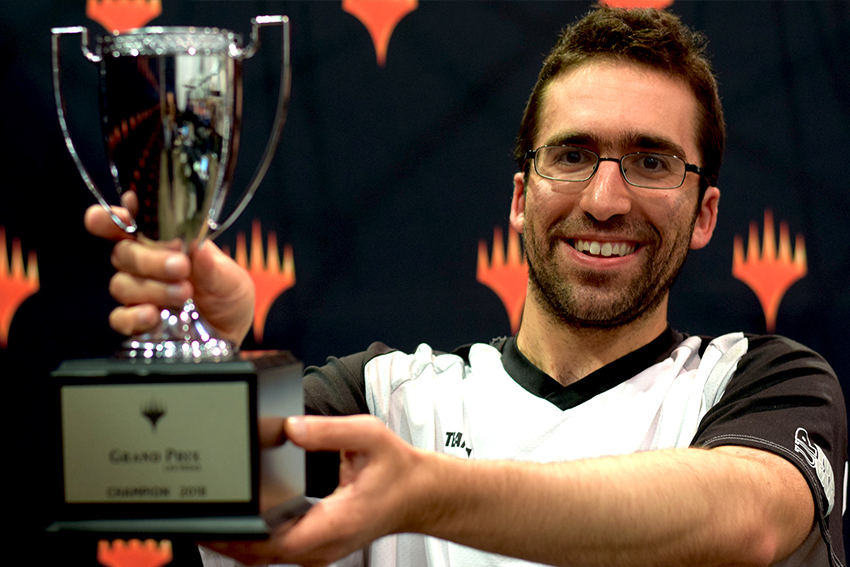
Image Copyright : Wizards of the Coast
Matt Nass did a great job showcasing the power of the deck earlier this year, top 8’ing three Modern GPs in a row, winning two of those, which is an incredible achievement, but it was 《Sai》 replacing 《Ghirapur AEther Grid》 of old what made me truly interested in the deck.
《Spine of Ish Sah》
《Spine of Ish Sah》 is definitely the most flashy card choice in my GP list. I took that little piece of tech from a Magic Online player jadoth. Truth to be told, 《Spine》 is not incredible, but it opens some doors. It mainly fills a role similar to 《Myr Retriever》, being a loop enabler. Usually, that spot was occupied by second 《Myr Retriever》, but there a few small upsides of running 《Spine》 over it:
The downside, of course, is that’s a giant brick, not reasonable castable without 《Ironworks》 in play. 《Myr Retriever》 is slightly more clean and linear, 《Spine》 is slightly more flexibility, so for now I am happy with and I choose to play with 《Spine》.
Board Out Your 《Mind Stone》s
I general, 《Mind Stone》 is your worst card in post-board games. Regardless of their actual effectiveness, players are going to sideboard in artifact removal spells against 《Ironworks》, and 《Mind Stone》 is the only card that trades somewhat badly with them. By cutting 《Mind Stone》s, you turn 《Ancient Grudge》s and 《Wear // Tear》s into speedbumps you can work around.
It also clashes with 《Engineered Explosives》 on two, is weaker to 《Stony Silence》 than other artifacts because it’s more expensive and 《Sai》 can’t crack it for value, and again, post-board always gets slower, more interactive, so turboing out your 《Krark-Clan Ironworks》 is less important. Don’t let your opponent line up their cards well if you can avoid it. 《Sai》 straight up embarrasses 《Ancient Grudge》.
Miscellaneous Advice
Playing 《Chromatic Sphere》 over 《Terrarion》
Since you can’t sacrifice 《Chromatic Sphere》 for value with 《Krark-Clan Ironworks》, you usually want to cycle it as soon as possible, so typically it is preferred to play turn one 《Chromatic Sphere》 over turn one 《Terrarion》.
Finding 《Mind Stone》 Aggressively
Game one, most often you should cycle your turn one egg (《Terrarion》/《Star》/《Sphere》) on turn two to look for 《Mind Stone》; in general, cycle them a lot, unless you already have 《Ironworks》 and enough mana sources – then it’s beneficial to try to build a bigger battlefield before going all in.
Be Careful of Your Land Sequences
Game one, unless you are sure you’ll need your colored mana next turn, play out your 《Darksteel Citadel》s and utility lands before color-producing lands. You might always draw more 《Darksteel Citadel》s, and colored mana is rarely an issue. Avoid playing on your utility lands into 《Field of Ruin》. Post-board, when facing a 《Stony Silence》 deck, actually avoid playing out 《Darksteel Citadel》s early.
Using 《Ancient Stirrings》 as a 《Demonic Tutor》
《Ancient Stirrings》 is a powerful, but thankfully a fairly simple cantrip. Try to hold it for as long as possible, and only cast it when you know what you are looking for. Prioritize spending mana in other ways if it’s unclear, and cast 《Ancient Stirrings》 once you have more information about the texture of your hand.
Matchup Guide
Dredge
Dredge is a good, but very loseable matchup. Game one is mostly a clean goldfish, which you are ahead in.
Relevant Post-board Cards: 《Leyline of the Void》, 《Ancient Grudge》, (infrequently) 《Damping Sphere》, 《Thoughtseize》
The most tricky part here is that they do not always run 《Leyline of the Void》, but more often than not, you should expect it. Since 《Nature's Claim》 is really bad otherwise, they can steal post-board games this way. I have not developed a truly preferred sideboard plan for this matchup, because it’s mostly reactionary to theirs, but:
Therefore, in the dark:

Against Dredge
Adjust amount of 《Claim》s for game three – you should know, since you’ll see a decent chunk of their deck. 《Sai》 is also stronger on the play, than it is on the draw. Post-board, turn 1 《Stirrings》 is a valid line, giving you a shot at finding 《Tormod's Crypt》.
5C Humans
Not a good matchup game one. Their hatebears match up very well. Game one, 《Engineered Explosives》 can backfire if you draw a lot of 《Mind Stone》s, and since it’s your only removal spell, it might be not good enough against an early 《AEther Vial》. After seeing that your opponent is playing 5C Humans, it’s sometimes valid to just run out 《Engineered Explosives》 on 2 counters on turn two, before they play any of their two-drops, to avoid getting locked out.
The combination of 《Sai, Master Thopterist》 and a pile of removal spells stretch them thinner post-board. and allow you to assume the control role, and you can even keep more artifacts than against Spirits.

Against 5C Humans
Relevant Post-board Cards: ???
5C Humans decks often sideboard cards like 《Gaddock Teeg》, 《Kataki, War's Wage》, 《Anafenza, the Foremost》 or 《Damping Sphere》, but those are not even that effective, and there are no bad cards to cut in their maindeck to begin with, so it’s very hard for 5C Humans to improve post-board. With more spot removal to break their soft-locks, 《Engineered Explosives》 becomes incredible, and 《Sai》 is a one-card gameplan against them.
Once in a while, they will have some barely castable 《Stony Silence》 or 《Rest in Peace》, but you’ll just need to dodge those – I think I would rather not sideboard against those even if I’ve seen my opponent playing those. 《AEther Vial》 is a secondary target, but only very early, when you don’t even know if they drew their 《Claim》 target or not. You can always use 《Engineered Explosives》 to clear 《Rest in Peace》 too.
《Meddling Mage》 is one of the reasons to play a split of 《Lightning Bolt》s and 《Galvanic Blast》s.
Tron
Tron is slightly trickier than it might appear on the first glance. You can mostly goldfish them out game one as long as you dodge turn 3 《Karn Liberated》 killing your mana sources.
Relevant Post-board Cards: 《Relic of Progenitus》, 《Surgical Extraction》, 《Nature's Claim》, 《Thought-Knot Seer》

Against Tron
《Engineered Explosives》 serves no purpose other than being a zero-drop, while 《Negate》 is generally useful and 《Claim》 can mostly force a 《Relic of Progenitus》 pop. Honestly, I’m not entirely convinced that a blank zero-drop is worse than 《Claim》, so keep that in mind.
Pulling the trigger on your combo when your opponent has open mana and some interaction while you are low on resources is an easy way to lose, but between 《Thought-Knot Seer》, 《Karn Liberated》, and 《Claim》/《Surgical Extraction》 combination, you have some incentives pulling you in different directions.
General heuristic would be to try to build up your battlefield and avoid going for lines that crumble when facing minimal interaction. If they are heavy on 《Surgical Extraction》, you could almost consider playing one or two 《Sai》 to fight back, but 《Oblivion Stone》 and 《Ulamog, the Ceaseless Hunger》 go over the top of that plan. 《Swan Song》 is another card you can utilize for that purpose. With careful play, you should be fine.
Bant Spirits
Game one is mostly a die roll to see if they can successfully 《Spell Queller》 your 《Krark-Clan Ironworks》 or not. Their clock can be surprisingly slow, though, so some 《Mind Stone》 powered draws can run out 《Engineered Explosives》 on 3 before casting your 《Ironworks》, sometimes paying it for five mana with three colors, to make them not targetable by 《Spell Queller》.
Relevant Post-board Cards: 《Thalia, Guardian of Thraben》, 《Rest in Peace》, 《Stony Silence》, (rarely) 《Gaddock Teeg》, some counterspells

Against Bant Spirits (On the Play)

Against Bant Spirits (On the Draw)
Trying to play a normal combo game would end up poor against such an abundance of hate, but fortunately, 《Sai》 control is a cohesive enough plan to actually allow you to function somewhat reasonably under both hate-enchantments. Overall, it’s not a matchup I’m excited to face but is perfectly beatable despite what it looks like on the surface.
They can really get watered down with all those enchantments and you have actual card advantage in your deck while they don’t.
UW Control
A very important heuristic against UW Control game one is simple – just jam your 《Krark-Clan Ironworks》 if they have less than 4 mana up, do not just jam if they are representing 《Cryptic Command》. Maindecks have very limited amounts of cheap counterspells, so just force them to have it early. Failing that, you need to transition into a plan of overloading their counterspells. To do so, prioritize lands, try to avoid getting your 《Buried Ruin》 into 《Field of Ruin》ed, save 《Pyrite Spellbomb》 to kill potential 《Vendilion Clique》 so you don’t get clocked, and don’t cycle your 《Mind Stone》s.
At some point, your opponent might start missing land drops or be forced to tap out for a Planeswalker, or you might just be able to play two 《Krark-Clan Ironworks》 in a turn, followed by another attempt next turn. Once 《Ironworks》 has resolved winning should be trivial. If you don’t run head-first into 《Cryptic Command》s and allow them to spend their mana, game one is actually very much in your favor. Post-board ones are tough.
Relevant Post-board Cards: 《Rest in Peace》, 《Stony Silence》, (more) counterspells, 《Surgical Extraction》, (sometimes) 《Spell Queller》, 《Dispel》

Against UW Control (On the Play)

Against UW Control (On the Draw)
Now you have some counterspells on our own, and your opponent’s deck is less unwieldy and has no dead cards, so the play patterns present in game one rarely occur. 《Sai》 should be jammed pre-《Cryptic Command》, since if they fail to have 《Path to Exile》 immediately, you can steal a game this way. unfortunately, I think you have to accept 《Spell Queller》 being incredibly hard to beat if they play it. Against Jeskai, you could consider playing slightly less 《Nature's Claim》s, but the matchup is mostly the same.
Burn
Game one, be mindful of 《Eidolon of the Great Revel》. That means prioritizing 《Pyrite Spellbomb》 or 《Spine of Ish Sah》 with your 《Stirrings》 if reasonable.
Relevant Post-board Cards: 《Rest in Peace》, 《Destructive Revelry》, 《Smash to Smithereens》

Against Burn
《Mind Stone》 gets boarded out for usual reasons. You could try controlling the game with 《Sai》 if your opponent really has a lot of white hate enchantments, but it’s not ideal and can just get ignored. 《Claim》 doubling as interaction for 《Rest in Peace》 and 《Eidolon》, while still being a life gain spell, makes it reasonable to go a little deeper on interaction, especially on the draw.
Jund/BG
Relevant Post-board Cards: (rarely) 《Leyline of the Void》

Against Jund/BG
They do not play 《Leyline》 too often, so I wouldn’t bother boarding 《Claim》s in the dark – 《Spine of Ish Sah》 gives you a nice out to 《Inventors' Fair》 for on your combo turn if it turns out that they do. Adjust game three, starting with cutting more 《Mind Stone》s. Discard-based disruption doesn’t match up too well against a wealth of cyclers that you can leave on the battlefield.
Mardu Pyromancer
Relevant Post-board Cards: 《Leyline of the Void》, 《Kambal, Consul of Allocation》, 《Surgical Extraction》

Against Mardu Pyromancer
Similar to other black midrange decks, but they usualy have slightly problematic combinations of hatecards. They are very weak to 《Sai》, so transforming your deck should work.
I prefer 《Lightning Bolt》 to 《Galvanic Blast》 because the games are very resource-light and you need to kill 《Kambal, Consul of Allocation》. Cut 《Claim》s game three if you see non-《Leyline》 graveyard hate.
UR Storm
UR Storm is an interesting one, since I had so much more success than I would have guessed at first. I do actually have a pretty poor winrate in pre-boarded games, but KCI gets to bring in good interaction, while Storm being a much more resource-intensive deck seems to damage it’s own chances by boarding weak disruption like 《Abrade》, 《Shattering Spree》 or 《Echoing Truth》.

Against UR Storm
《Lightning Bolt》 is greatly preferable there over 《Galvanic Blast》, because you might miss “Metalcraft” early and be unable to kill 《Baral, Chief of Compliance》. As long as you kill their cost reducer creatures, you should be able to jam your 《Krark-Clan Ironworks》 through 《Remand》s even if it takes a few turns.
RB Hollow One
Relevant Post-board Cards: 《Leyline of the Void》, 《Ancient Grudge》, 《Thoughtseize》

Against RB Hollow One
I assume that 《Tormod's Crypt》 is not worth it there, but might be incorrect. 《Claim》 is great, since it kills 《Hollow One》 in addition to 《Leyline》s.
It’s hard for them to justify having removal spells for 《Sai》, but I have seen post-board 《Lightning Bolt》s from some players with a wider range, so think twice about blocking a 《Bloodghast》 with 《Sai》. This deck was mostly popular earlier this year, before 《Sai》 got released, and my matchup data seems to suggest that there are some merits to taking the draw. Unfortunately, this is something I haven’t explored yet – random discard effects seem to enjoy bigger handsize, it seems.
Grixis Death’s Shadow
The most nightmarish matchup. You can control 《Death's Shadow》 with 《Engineered Explosives》 and 《Grove of the Burnwillows》 (always make them gain life turn one in the dark!), but 《Gurmag Angler》 being untouchable is very problematic. You can win game one if your cards have to line up nicely, but I don’t think I can offer any better advice than draw well and hope they will stumble.
Relevant Post-board Cards: 《Leyline of the Void》, 《Ceremonious Rejection》

Against Grixis Death’s Shadow
Unfortunately, 《Ironworks》 main gameplan matches up so badly against the combination of 《Gurmag Angler》 and 《Stubborn Denial》, that I think the best way to approach sideboard games is to dodge 《Leyline》, put them on the play, hope they stumble, and board in 《Sai》s as extra threats. 《Sai》 is not foolproof either, because of 《Temur Battle Rage》, and because it’s somewhat easy for their deck to leave in a couple of 《Dismember》s.
I have tried boarding in 《Swan Song》 or a single 《Nature's Claim》, but would rather avoid that – Grixis Death’s Shadow really teaches you a lesson about opportunity costs.
《Hardened Scales》
I believe that 《Hardened Scales》 is slightly underpowered in general, and it’s definitely not well suited to fight fast combo decks. Unless they draw their namesake card, it’s pretty hard to lose game one.
Relevant Post-board Cards: 《Damping Sphere》 (a lot of those), 《Nature's Claim》

Against 《Hardened Scales》
Your 《Claim》s are so much more powerful than theirs. 《Sai》 is not at it’s best, because the strength of 《Hardened Scales》 is that the deck scales incredibly well and a huge 《Walking Ballista》 can go over the top, but it still might be relevant enough since their deck will be watered down with hatecards. Keep 《Welding Jar》 in mind when you use 《Engineered Explosives》 and try not to lose to a protected 《Damping Sphere》.
It’s possible that going full-on 《Sai》 and 《Lightning Bolt》s would be an even more effective strategy.
Conclusion
There truly are infinite archetypes in Modern, and I probably haven’t covered some that interest you, but by now you should be getting the general gist of it – you want 《Sai》, unless your opponent goes way over the top of an army of Thopters, and you need to be ready with correct interaction for how your opponent will be trying to beat you, but at the same time you have some leeway because of power of your cards.
Best of luck in all of your upcoming tournaments! Next event for me is Grand Prix Liverpool, where I’ll be teaming with Niels Molle and Joao Choca, playing the best deck in Modern.


